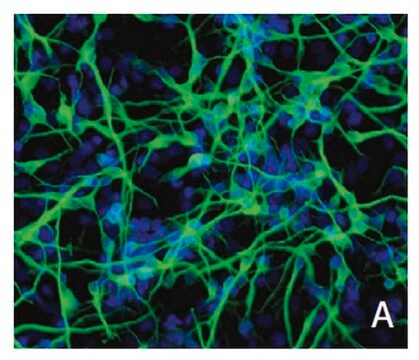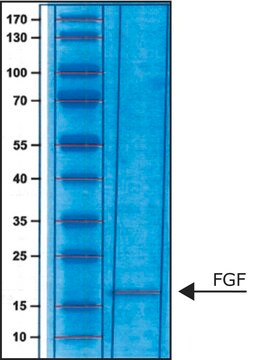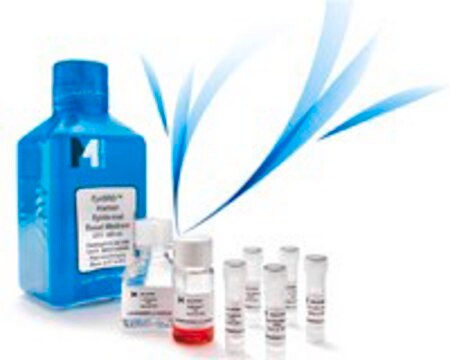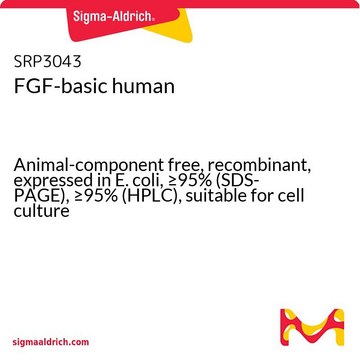GF003
Fibroblast Growth Factor basic, human
>95% (SDS-PAGE), recombinant, expressed in E. coli, suitable for cell culture
Synonim(y):
FGF-2, Heparin-Binding Growth Factor 2, bFGF, beta-FGF
About This Item
Polecane produkty
product name
Fibroblast Growth Factor basic Protein, Human recombinant,
pochodzenie biologiczne
human
Poziom jakości
Próba
>95% (SDS-PAGE)
producent / nazwa handlowa
Chemicon®
metody
cell culture | stem cell: suitable
zanieczyszczenia
<0.1 EU/μg Endotoxin level (of FGF-b)
moc wejściowa
sample type neural stem cell(s)
sample type mesenchymal stem cell(s)
sample type epithelial cells
numer dostępu NCBI
numer dostępu UniProt
Opis ogólny
Zastosowanie
Optimal working dilutions must be determined by end user.
Powiązanie
Postać fizyczna
Przechowywanie i stabilność
General applications:
After a quick spin, reconstitute in 0.1M phosphate buffer, pH 6.8, to a concentration of 0.1-1.0 mg/mL. Reconstituted b
Komentarz do analizy
Informacje prawne
Oświadczenie o zrzeczeniu się odpowiedzialności
Kod klasy składowania
13 - Non Combustible Solids
Klasa zagrożenia wodnego (WGK)
WGK 1
Temperatura zapłonu (°F)
Not applicable
Temperatura zapłonu (°C)
Not applicable
Certyfikaty analizy (CoA)
Poszukaj Certyfikaty analizy (CoA), wpisując numer partii/serii produktów. Numery serii i partii można znaleźć na etykiecie produktu po słowach „seria” lub „partia”.
Masz już ten produkt?
Dokumenty związane z niedawno zakupionymi produktami zostały zamieszczone w Bibliotece dokumentów.
Klienci oglądali również te produkty
Nasz zespół naukowców ma doświadczenie we wszystkich obszarach badań, w tym w naukach przyrodniczych, materiałoznawstwie, syntezie chemicznej, chromatografii, analityce i wielu innych dziedzinach.
Skontaktuj się z zespołem ds. pomocy technicznej








